Mold – The Biggest Threat to a Healthy Home
This blog post is a continuum of the previous posts –
Flood Damage, Mold and How to Start Rebuilding your home
Floor Damage After a Hurricane or Flood
Post-Flood Improper Drying: What Risks Your Home is Facing
Since the catastrophic hurricanes have hit Houston, Florida, and Puerto Rico, we want to help you understand your homes environment and how to keep it as safe and healthy as possible. That means knowing how to prevent the growth of mold in your home.
First, let’s get a better idea of what “Mold” really is –
All molds are a type of fungi and they come in a variety of colors, from black to white, green, grey and even orange! There are thousands of species of mold-spores, some more commonly found in homes than others, and some even found in everyday foods we eat. Some molds are a blessing in disguise, and have the capability to naturally kill bacteria; the mold “Penicillium” is what makes up the common anti-biotic drug “Penicillin” which was a breakthrough in medicine and has saved countless lives from bacterial infection ever since its creation.
Common household molds 101 –
It may sound scary but the truth is, mold is everywhere; that doesn’t mean if you find it growing somewhere in your home you can leave it alone; by all means, get out the bleach, open the windows and start spraying away! What we mean is that microscopic mold spores are constantly in the air all around us, looking for a moist area to latch onto to grow. Typically small quantities of common household molds do not present a health hazard. In large quantities however, mold will have adverse effects on your health, sometimes very severe. Depending on your sensitivity level to mold, sometimes even small quantities can have a drastic impact on your health. Infants and young children may be especially sensitive. An allergy to mold isn’t something that you necessarily have to be born with either, long term exposure to mold can cause your body to build and allergy to it, making the adverse health effects even worse.
Discovering the growth of mold anywhere in your home can be frightening; however, not all molds are toxin-producing ones. The kinds of molds that are extremely hazardous to your health produce what is called “Mycotoxins,” and these Mycotoxins are what can be fatal to humans and animals if inhaled or ingested. When mold grows, it’s ultimately reproducing, creating more mold spores; on these new spores is where the Mycotoxins are attached. Once the spores and attached mycotoxins become airborne, they are then considered a serious health hazard.
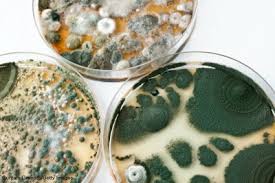
Mold Test Kit
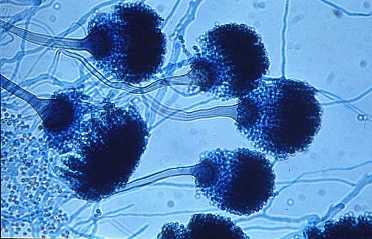
Mycotoxins
How to tell if you have mold in your home –
- Aside from visually seeing the mold growth, a common way to detect that there is mold lurking around somewhere is by its odor. Mold has a very distinct musty odor and if you can smell Mold in your home, chances are it has found a nice, moist and humid hiding place to grow.
- If you have had a leak or moisture issues somewhere in your home, there is a chance that mold will soon be present in those areas if not thoroughly dried out.
- If your home has been subject to flooding or severe water damage like a pipe burst which caused flooding, consider the fact that there is mold and remediate the potential problem. It’s always best to take proactive measures rather than be nonchalant about the threat of toxic-producing mold growth.
- Be conscience of what your body is telling you – If you notice allergy/respiratory symptoms when you’re IN your home, but not when you’re outside, you may be developing an allergy to a contaminate like mold in your home.
Common areas in the home where mold is mostly found –
Household mold primarily thrives in damp, humid areas, such as basements, showers and areas around heating and cooling appliances. Mold in homes can also occur in carpets, ventilation ducts and crawlspaces. The best way to guard against mold in your house is to ensure there are no active leaks or an area where moisture is collecting regularly. Mold also thrives in moisture ridden areas of the home. Bathrooms, basements, kitchens, entry and exit points of the home, windows; any place where moisture is consistently present, chances are, you will have some type of mold-growth. Proper ventilation and humidity/moisture control is imperative to keeping mold-growth under control. Mold though, can literally grow on just about ANY surface throughout the home, as long as the conditions are right. Airborne mold spores can survive in any type of climate, no matter if it’s cold and dry or hot and humid; however, in order for these spores to attach to a surface and reproduce/grow, the conditions and environment have to be ideal; mainly warm and very humid, or with a constant water supply. As we’ve mentioned in our previous posts, natural materials such as wood, that have been subjected to saturation by water damage of any kind, are an absolute ideal home for mold to grow. Things like your homes’ interior wood structure, and/or window sills, plywood or pine plank subfloor that have experienced extreme moisture content is something to keep in consideration when looking to prevent the growth of mold in your home. Remember, water will find a way to seep into every crack and crevice in your home, and once it is trapped, the growth of mold is almost certain.
COMMON Types of mold in the Home
- Aspergillus – Aspergillus is a fairly allergenic mold that is commonly found on foods and in home air conditioning systems
- Cladosporium – Cladosporium is typically a black or green “pepper like” substance that grows on the back of toilets, painted surfaces and fiberglass air ducts. While this mold is nontoxic to humans, it can trigger common allergy symptoms, such as red and watery eyes, rashes and a sore throat.
- Stachybotrys atra (also known as black mold). – Most commonly identified by its black color, Stachybotrys is known to produce the highest amount of Mycotoxins when reproducing, making it a bigger health threat than other mold types.
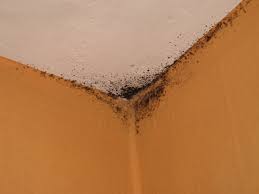
Cladosporium – Mold
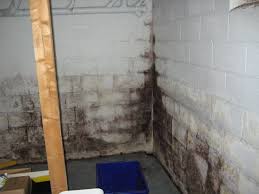
Basement Mold-Growth
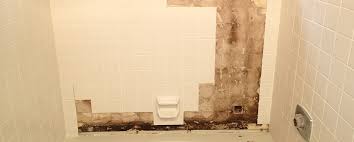
Mold Growth behind shower wall tile

Mold Growth underneath Carpeting
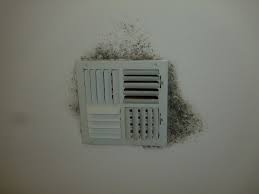
Mold Growth in HVAC Vents
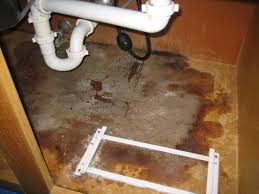
Mold Growth Under Kitchen Sink
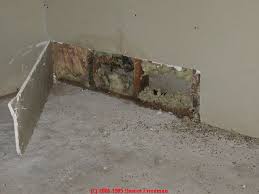
Mold-Growth in Drywall/Insullation
Symptoms of Mold
-
Allergies
-
Rash
-
Respiratory Issues
-
Sinus Infections
-
Nasal Congestion
-
Headache
-
Nausea
-
Sneezing
-
Itchy skin
How to test for mold?
- Air samples.
- DIY mold kits
- Call a professional
What should be done to remediate mold?
If you find some mold in your home, it really is no need for panic. You don’t have to gut your house to the studs to remedy a mild case of mold. However, if mold has developed in areas what you cannot get to, such as behind walls, in crawl spaces or above ceiling tiles, you should contact a local mold-removal professional.
For surface mold, bleach and water should do the trick. Keep in mind that bleach will discolor fabrics and wall coverings.
If mold has affected your flooring, replace it and take precautionary action with your subfloor. Many times, especially in basements, moisture seeps up through the concrete slab causing mold to grow under the floor covering. In cases like this, it is absolutely worth sealing your subfloor before installation of another floor covering. The same goes for basement walls.
If you’ve had a flood recently, speaking with a professional may be a good investment. They will come in and assess your home for mold and point out the problematic areas.
If you have a known moisture issue, purchasing a dehumidifier is recommended. Making sure your homes’ environment is steady and consistent, (meaning temperature, moisture and humidity levels) will help reduce the risk for mold to grow.
Fix any leaks that you know about and keep plumbing up to date with maintenance to avoid leaks and plumbing failure.
If mold has already grown on walls, consider replacing the sheet rock/wallpaper. Often times, it’s easier and best to replace than to clean. But again, this is completely dependent on the severity of the mold.
In cases where mold is an overgrowth, a mold remediation company should be sought. Remediation is an entire process in removing mold and its spores from the air and from the surfaces of your home. It is a very thorough process and requires a skilled contractor.
How to prevent mold?
Being that moisture is the building block for mold proliferation, the basic and most effective way to prevent mold is to keep moisture and water at bay. In areas of the home where that is basically impossible, such as kitchens and bathrooms, maintain plumbing, keep an eye (and a nose) out for mold-growth. Check for leaks in the roof or cracks in the foundation of a home. Seal windows and exterior door jams to avoid water penetrating those areas. If there is a way, water will find it, and by keeping areas dry, and clean, mold will not grow.
10 Comments
Pingback:
Pingback:
Pingback:
Pingback:
Pingback:
Pingback:
Pingback:
Pingback:
Pingback:
Pingback: